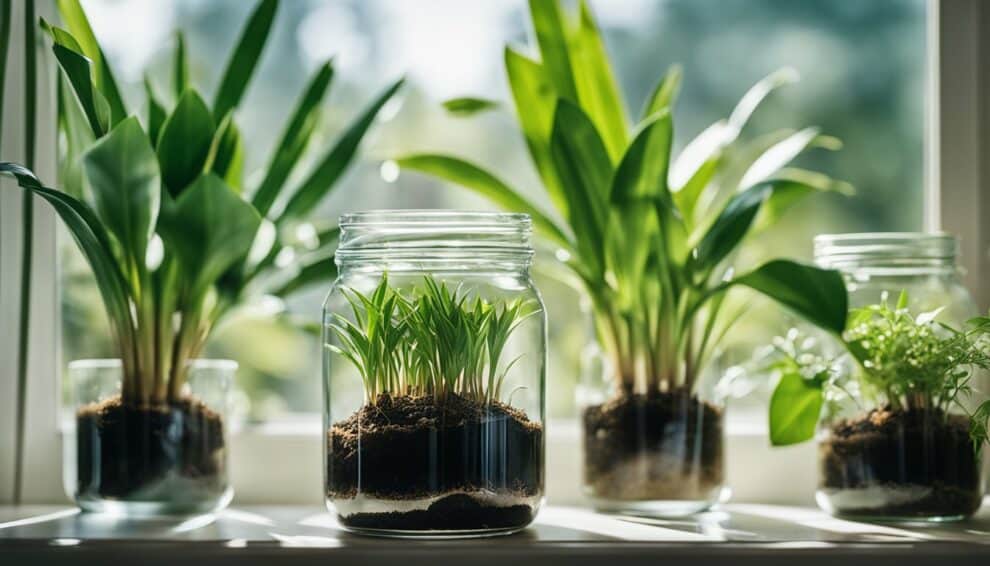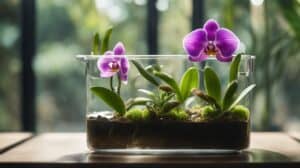Cordyline, also known as Ti plant, is a tropical plant that adds a touch of exoticism to any garden.
With its vibrant colors and striking foliage, it’s no wonder why gardeners are eager to propagate this plant.
Cordyline propagation from cuttings is a simple and cost-effective way to grow new plants.

Growing cordyline from cuttings is a great way to expand your collection or share the beauty of this plant with friends and family.
While it may seem daunting at first, with a little patience and the right techniques, anyone can successfully propagate cordyline.
In this article, we will explore the step-by-step process of cordyline propagation from cuttings, including the best time to take cuttings, how to prepare the cuttings, and how to care for them until they are ready to be planted.
Understanding Cordyline Propagation
Propagation Basics
Cordyline, also known as Ti plant, is a tropical plant that can be propagated easily from cuttings.
Propagation is the process of growing new plants from existing ones. Cordyline cuttings can be taken from the stem or the root.
Stem cuttings are the most common method of propagation.
To take a stem cutting, select a healthy stem from the parent plant.
Make a clean cut just below the node, which is the point where the leaves attach to the stem. Remove the lower leaves, leaving only a few at the top.
Dip the cut end of the stem in rooting hormone to encourage root growth. Plant the stem in a pot filled with well-draining soil and keep it moist.
Best Time for Propagation
The best time to take cordyline cuttings is in the spring or early summer when the plant is actively growing.
The plant is less likely to develop roots during the winter months when growth slows down.
It is important to note that cordyline cuttings may take several weeks to root and may require special care.
Keep the soil moist and provide the cutting with bright, indirect light.
Once the cutting has rooted and developed new growth, it can be transplanted into a larger pot or planted in the garden.
By understanding the basics of cordyline propagation, gardeners can easily grow this tropical splendor from cuttings.
With proper care and attention, cordyline cuttings can develop into beautiful and healthy plants.
Preparing for Propagation

Selecting Cuttings
Before starting the propagation process, it is important to select healthy and mature Cordyline cuttings.
The cuttings should be taken from the parent plant during the spring or summer months, when the plant is actively growing.
Choose cuttings that are at least 6 inches long and have a minimum of three leaves.
Make sure the leaves are healthy and free from any signs of disease or damage.
Tools and Materials Needed
To propagate Cordyline successfully, you will need a few essential tools and materials. These include:
- Pruning shears or a sharp knife: to take the cuttings from the parent plant
- Rooting hormone: to encourage root growth
- A container: to hold the rooting medium
- A rooting medium: such as perlite, vermiculite or a mixture of peat and sand
- Clear plastic bag: to create a humid environment for the cuttings to root
It is important to ensure that all tools and materials are clean and sterile to prevent the spread of disease.
This can be done by wiping down tools with rubbing alcohol and washing containers with hot soapy water before use.
By following these guidelines for selecting cuttings and preparing the necessary tools and materials, you will be well on your way to successfully propagating Cordyline and growing your own tropical splendor.
Propagation Techniques

There are two primary methods for propagating Cordyline: stem cutting and root division.
Both methods have their advantages and disadvantages, so it’s important to understand how each one works before deciding which one to use.
Stem Cutting Method
The stem cutting method is the most common way to propagate Cordyline.
It involves taking a cutting from the stem of the plant and rooting it in soil or water. Here are the steps to follow:
- Choose a healthy stem that is at least 6 inches long and has several leaves.
- Cut the stem at a 45-degree angle using a clean, sharp pair of scissors or pruning shears.
- Remove the bottom leaves from the stem, leaving only a few at the top.
- Dip the cut end of the stem in rooting hormone powder to encourage root growth.
- Plant the stem in a pot filled with well-draining soil or place it in a jar of water.
- Keep the soil or water moist and in a warm, bright location.
- After a few weeks, the stem should start to develop roots and new growth.
Root Division Method
The root division method involves separating the plant’s roots and replanting them in separate pots.
This method is best used for mature plants that have outgrown their current pot. Here’s how to do it:
- Carefully remove the plant from its pot and gently shake off excess soil.
- Use a clean, sharp knife to divide the root ball into several sections. Each section should have at least one stem and several roots.
- Plant each section in a separate pot filled with well-draining soil.
- Water the newly potted plants and place them in a warm, bright location.
- After a few weeks, the plants should start to develop new growth.
Both methods of propagation can be successful if done correctly.
Stem cutting is best for creating new plants from smaller, younger plants, while root division is best for mature plants that need to be divided.
With a little patience and care, anyone can grow beautiful Cordyline plants from cuttings.
Aftercare for Propagated Cordylines

Initial Care Requirements
After propagating cordylines, it is important to provide them with proper care to ensure their growth and development.
The following are some initial care requirements to consider:
- Watering: Water the newly propagated cordylines regularly, keeping the soil moist but not waterlogged.
Overwatering can lead to root rot, which can be fatal to the plants.
- Lighting: Cordylines require bright, indirect light to thrive.
Place them in a spot where they can receive adequate sunlight without being exposed to direct sunlight, which can scorch their leaves.
- Temperature: Cordylines prefer warm temperatures between 60-75°F (15-24°C).
Keep them away from cold drafts or extreme temperatures, which can stress the plants.
Transplanting and Long-Term Care
Once the propagated cordylines have established roots and are growing well, they can be transplanted into larger containers or planted in the ground.
Here are some tips for transplanting and long-term care:
- Soil: Cordylines prefer well-draining soil that is rich in organic matter.
Use a soil mix that contains peat moss, perlite, and vermiculite for optimal growth.
- Fertilization: Feed the cordylines with a balanced fertilizer every 2-3 months during the growing season (spring and summer).
Avoid over-fertilizing, which can lead to burnt leaves or stunted growth.
- Pruning: Prune the cordylines as needed to maintain their shape and size.
Remove any dead, damaged, or yellowing leaves to promote healthy growth.
- Pest and Disease Control: Keep an eye out for pests such as mealybugs, spider mites, and scale insects, which can infest cordylines.
Treat any infestations promptly with insecticidal soap or neem oil.
Watch for signs of disease such as leaf spot or root rot and take appropriate measures to control them.
By following these aftercare tips, your propagated cordylines can thrive and bring tropical splendor to your home or garden.
Frequently Asked Questions

What’s the best method to propagate cordyline from leaf cuttings?
Cordyline can be propagated from stem or leaf cuttings. However, stem cuttings are more successful and easier to propagate than leaf cuttings.
Stem cuttings should be taken from the parent plant and placed in a well-draining soil mix.
How long does it take for cordyline cuttings to root in water?
Cordyline cuttings can be rooted in water, but it may take several weeks for roots to form.
It is important to change the water regularly to prevent bacteria growth and to ensure the cuttings have enough oxygen.
Once roots have formed, the cuttings can be transplanted into soil.
Can I encourage my cordyline to sprout at the base, and if so, how?
Yes, it is possible to encourage cordyline to sprout at the base.
This can be done by cutting the stem back to the desired height and removing the leaves from the lower portion of the stem.
New growth should start to emerge from the base of the plant.
What are the steps to propagate cordyline australis effectively?
To propagate cordyline australis, take stem cuttings from the parent plant and allow them to dry for a few hours.
Plant the cuttings in a well-draining soil mix and keep them moist. Place the cuttings in a warm, bright location but out of direct sunlight.
Roots should form within a few weeks.
Is it possible to root cordyline fruticosa cuttings directly in water?
Yes, cordyline fruticosa cuttings can be rooted directly in water. Take stem cuttings from the parent plant and place them in a container of water.
Change the water regularly and wait for roots to form before transplanting the cuttings into soil.
How can I successfully propagate a ti plant in soil?
To propagate a ti plant in soil, take stem cuttings from the parent plant and allow them to dry for a few hours.
Plant the cuttings in a well-draining soil mix and keep them moist. Place the cuttings in a warm, bright location but out of direct sunlight.
Roots should form within a few weeks.













